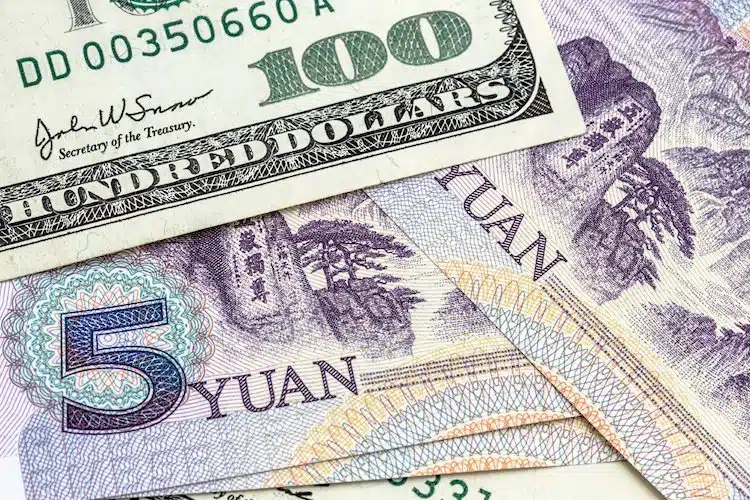China’s central bank, the People’s Bank of China (PBOC) sets the yuan’s exchange rate on the mainland using strict control measures, given that the onshore yuan (CNY) differs from the offshore one (CNH) in trading restrictions. The offshore yuan is not as tightly controlled as the onshore yuan. Each morning, the PBOC sets a daily midpoint fix based on the yuan’s closing level of the previous day and quotations taken from the inter-bank dealer. Recently, the PBOC set the yuan at 6.9237 against the last close of 6.9323.
The fixing of the onshore yuan exchange rate is an important element of China’s exchange rate mechanism. The exchange rate system adopted by China is a managed floating exchange rate regime based on market supply and demand with reference to a basket of foreign currencies. This basket of currencies typically includes the US dollar, the Euro, the Japanese yen, and the South Korean won, among others. By employing this mechanism, the PBOC can guide the exchange rate to fluctuate within a specified range while maintaining relative stability.
The daily fixing process comprises three main steps. First, the previous day’s onshore spot rate is used as the base rate for the fixing. This is because the spot rate already reflects the market supply and demand for the currency. Second, several market makers submit quotes to the PBOC indicating their desired fixing rates. These market makers, which mainly include major state-owned commercial banks, are responsible for maintaining abundant liquidity in the foreign exchange market and ensuring the stability of the exchange rate. Finally, the PBOC calculates the daily fixing rate based on the market makers’ quotes and other market variables, such as the closing prices of major currency pairs and the movement of the currency basket.
There are several reasons why the PBOC fixes the yuan’s exchange rate rather than freely floating it. First, the central bank aims to maintain the currency’s stability, which is essential for managing global trade and domestic price levels. By fixing the exchange rate, the PBOC can mitigate the risks posed by wild fluctuations in the currency market, which could otherwise jeopardize trade balances and disrupt domestic economic stability.
Second, fixing the exchange rate allows the PBOC to protect China’s foreign exchange reserves. These reserves are crucial for maintaining the confidence of international investors in the Chinese economy and for securing the yuan’s value. When the yuan is under downward pressure due to unfavorable market conditions or speculative attacks, the PBOC can intervene by selling its foreign exchange reserves to defend the currency. However, this can only be done within limits, as excessive intervention could cause China’s foreign exchange reserves to deplete rapidly.
Lastly, a fixed exchange rate provides greater control for the central bank in implementing monetary policies. By maintaining a stable exchange rate, the PBOC can influence domestic money supply and demand to achieve its policy goals, such as controlling inflation and promoting economic growth. In addition, a fixed exchange rate can serve as an anchor for inflation expectations, which helps improve the credibility of the central bank’s monetary policy.
Despite the benefits of fixing the exchange rate, China is gradually moving towards a more market-oriented exchange rate regime. In recent years, the PBOC has taken several measures to widen the trading band of the yuan and allow the market to play a larger role in determining the exchange rate. These measures include introducing the “counter-cyclical factor” in the fixing calculation, which acts as a buffer against excessive volatility, as well as encouraging more participants, including foreign institutional investors, to trade in the foreign exchange market.
In conclusion, the PBOC fixes the yuan’s exchange rate on the mainland to maintain stability, protect its foreign exchange reserves, and exert greater control over its monetary policies. However, China is also gradually adopting a more market-oriented approach to its exchange rate mechanism to enhance the flexibility and efficiency of the market.


